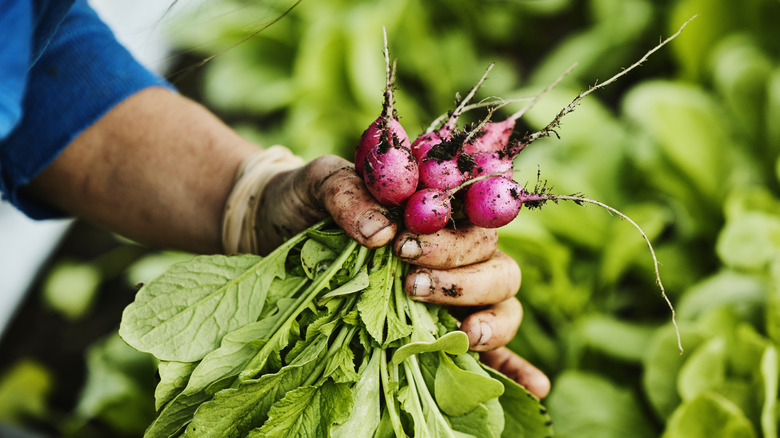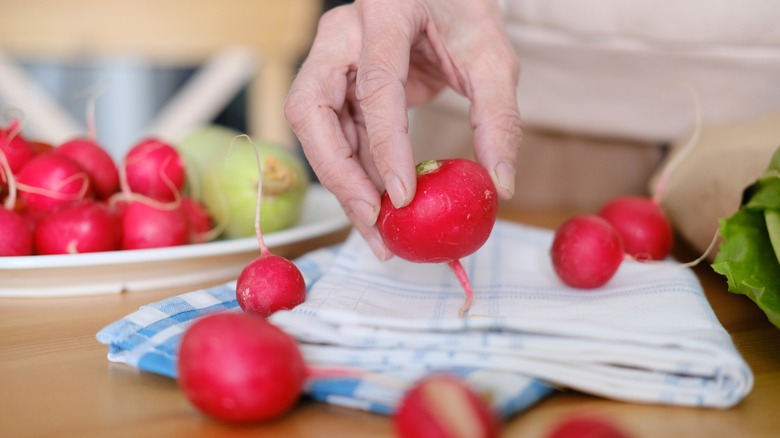The Unpopular Vegetable You Should Be Eating To Protect Against Cancer
If there is one food group dietitians and other health professionals suggest you eat for better health, it's vegetables. You may have hated it when your parents tried to get you to eat vegetables when you were a kid, but you eventually realized that eating more vegetables can help you manage your weight while protecting you from chronic disease.
Radishes are one of those vegetables that aren't often featured as side dishes. Instead, chefs might carve radishes into interesting shapes to make their dishes appear more interesting. A ½ cup of radishes provides almost a gram of fiber and 10% of your daily supply of vitamin C. You'll also get about 3% of your potassium and a bit of calcium in radishes. While it might seem like radishes lack many nutrients, they do have natural compounds that can benefit your health.
"Radishes are from the Brassicaceae or Cruciferae family of vegetables," said Tami Best, a registered dietitian at Top Nutrition Coaching, in a Health Digest interview. "These vegetables are known to enhance the body's production of the master antioxidant known as glutathione. Glutathione is needed to support the body's detoxification processes in the liver." Other compounds in radishes might also protect your body from certain cancers.
Radishes could protect you from cancer
"Radishes are a good source of vitamin C, an antioxidant that has been shown to protect against certain cancers," Best said. A 2015 article in Science found that high doses of vitamin C can target colorectal cancer cells that often resist treatment. These cancer cells absorb an oxidized form of vitamin C that disrupts the cellular processes and kills the cancer cells.
Radish seeds have a compound called sulforaphene that might fight aggressive forms of breast cancer, according to a 2017 article in Phytomedicine. Sulforaphene reduces these breast cancer cells' ability to divide while triggering apoptosis, which is programmed cell death. While sulforaphene attacks breast cancer cells, it has a limited impact on healthy breast cells.
If you add some radishes to salads, you're typically adding the roots. A 2009 study in Acta Horticulturae suggests adding radish leaves (called the shoots) to your diet as well. While the radish roots and shoots both have cancer-fighting glucosinolates, the shoots produce both sulforaphane and sulforaphene, which activate detoxing enzymes to prevent cancer.
Other beneficial nutrients in radishes
The shoots and sprouts of radishes also have higher levels of vitamins, minerals, and bioactive compounds than the roots, according to a 2021 article in Trends in Food Science & Technology. Radish shoots are high in protein, potassium, and vitamin C, and radish sprouts are high in vitamin A. Radish shoots and sprouts can be added to salads for added nutrition without many added calories.
Although Best says that radishes can add a peppery flavor to your salad, they can complement other foods as well."Radishes are pretty versatile," she said. "They can be served as an easy appetizer paired with a creamy dip or buttery spread. They make an excellent topper in a slaw to be served over tacos." You can also roast radishes in your oven or air fryer for a great side dish for roasted meats. Radishes also can be pickled in apple cider vinegar, a little sugar, and salt for a great topping for burgers.



